Every so often on the iRacing.com Motorsport Simulations platform, users will be notified that the iRacing Sporting Code has been updated during a build cycle. While most of these rules stay the same, some language is usually updated for more clarity or better definition.
The Sporting Code has been pretty consistent through the years. The rule book dates back to its launch alongside the public service in 2008. While there’s been much more added over time, the basics are fairly easy to understand.
What are the basics?
When you register for an iRacing account, you have to agree that you’ve read and understood the Terms of Use. In those terms, the iRacing Sporting Code is linked as required reading to properly accept the terms. Let’s be honest, how many people actually read every line of every agreement? iRacing has to put it there legally, so if you do break the code of conduct, they’ve technically warned you.
If you haven’t read the Terms of Use or the End User Licensing Agreement that iRacing and pretty much all other companies force you to sign when you register for a service, then that’s not the end of the world. However, if you think you can sign up for iRacing and drive backwards and wipe out the field, then you’ll just be wasting money at that point.
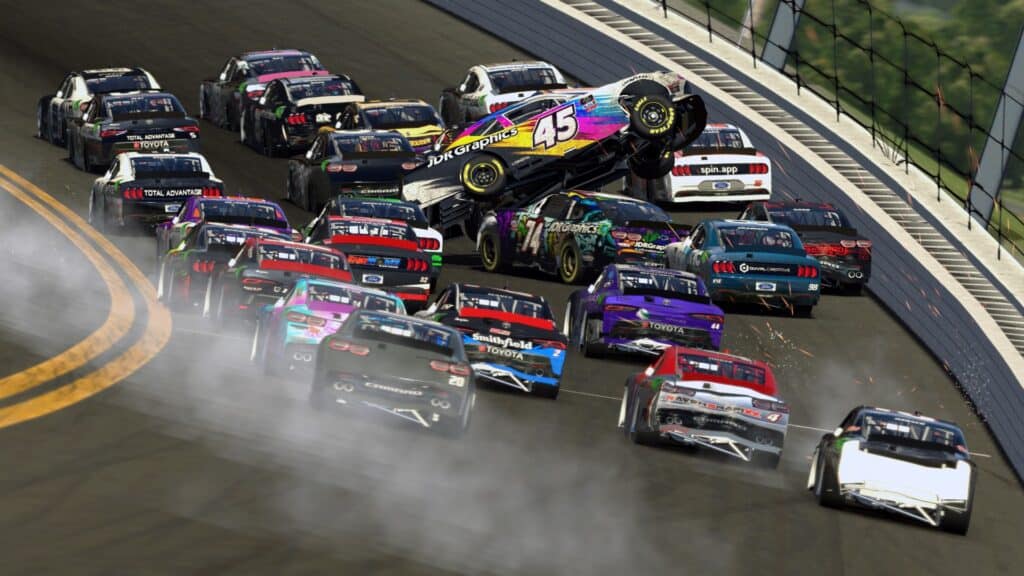
iRacing’s Sporting Code protects you, the user of the iRacing product as well as your competitors. It also protects iRacing. There is a ton of legal jargon in there that explains what you are signing up for.
For example, if you look at what is currently on Page 14, Section 5.2, you’ll notice that by just participating in any official race on iRacing, they can legally use your name, likeness, and all of whatever you provide while on their service for their own promotional material. You agreed to that when you registered.
If you talk over the microphone, if you upload a profile picture, whatever you give them, they can use it. There’s also a broadcast policy that exists separately. You might be the one promoting iRacing and their members in that sense, so it’s a whole different ballpark of terms.
OK how about the real basics…
Looking beyond the legal stuff, the basics are really the racing etiquette, what different procedures for each type of racing means, as well as how you advance up the ranks in each area. Basically, drive clean, race hard, and don’t ruin the experience for others.
There is a safety rating, an iRating and a license level to maximize upon that we’ve covered before in detail. If you’re fast and clean, no worries. Even if you’re not fast, as long as you’re clean, you’ll be able to get a high safety rating and advance up the license levels.
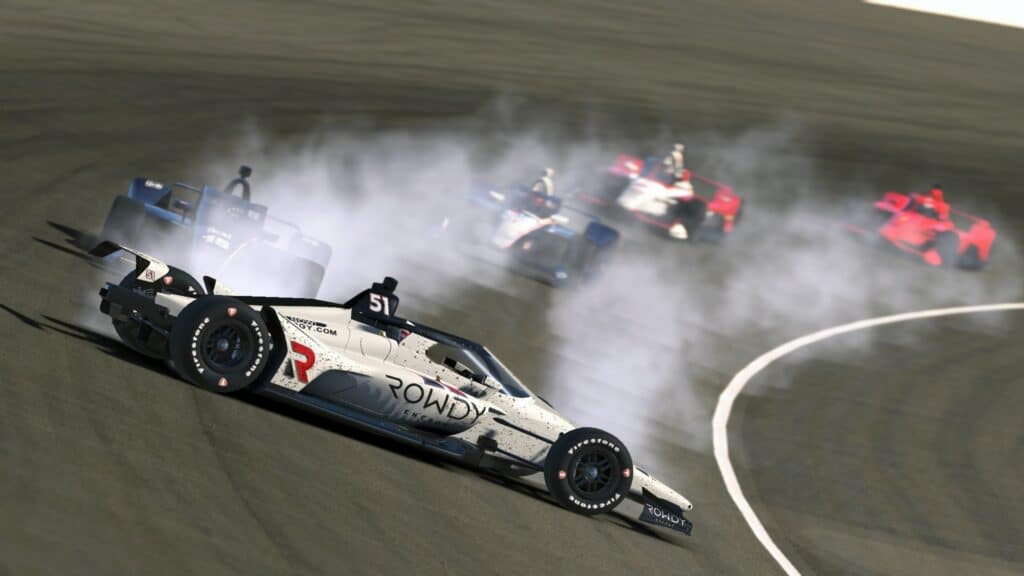
If you wreck, well it’s not against the rules to wreck, but you may be subject to a protest, and if iRacing finds that, or use of foul language, or the use of an exploit, or anything derogatory that has been sent to them against you, they have the right to reprimand.
Protests?
Yes, protests. Let’s say you and another driver have beef and you go over the edge and completely wipe them out. Well, if the other driver wants, they could save the replay and send iRacing a little clip of the action. It will be filed as a protest and looked at by race stewards. If they look at it and say you’ve violated Section 6.10.3, then you’ll likely have some time off from iRacing.
That goes for intentional wrecking, retaliation, exploiting, cheating… basically anything that goes against the Sporting Code. For wrecking purposes, Scott Speed is a famous violator that comes to mind. Speed was suspended for a slew of intentional wrecks that were protested by the people he offended. He eventually got unsuspended, however.
The other driver has the right to protest, and if iRacing does deem you to be at fault and you get reprimanded, you also have the right to appeal. Of course, you can’t just respond back and say it’s a garbage call, fix it now, etc. iRacing would appreciate a well-worded appeal and who knows, maybe if you read well, you might get away with it?
Can people protest for words spoken or written too?
Yeah, most definitely. The most infamous case of this comes from the 2020 Monza Madness event in which Kyle Larson used a racially derogatory term and was both suspended indefinitely from iRacing AND from NASCAR. He’s since atoned for his actions and is a championship favorite this year. It goes to show that even high-level drivers can get burned by the system.
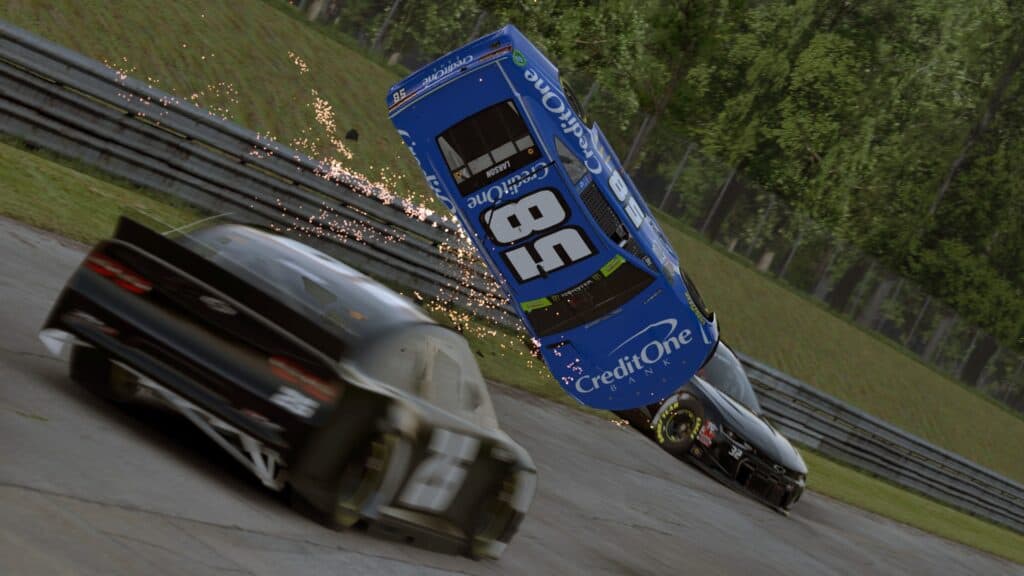
Calling someone dumb, or maybe a little more vulgar than that likely won’t result in anything too catastrophic. If it’s bad enough, iRacing could always remove chat abilities or mute you service-wide for a period of time. Or, if it is that bad, they do have the right to terminate your account. Either way, just be smart in your words.
How do you report someone on iRacing?
iRacing has a pretty straightforward process to report those breaking the by-laws of the code.
They have to be filed appropriately through the iRacing UI following the event in which it happened (a button labeled ‘File a Protest’ will be useable after 30 minutes following the race) or through a specified iRacing link found on their Support Site.
Members have up to seven days to file a protest and report someone. You will need to have details that tell the story so that iRacing stewards can properly look at the offense.
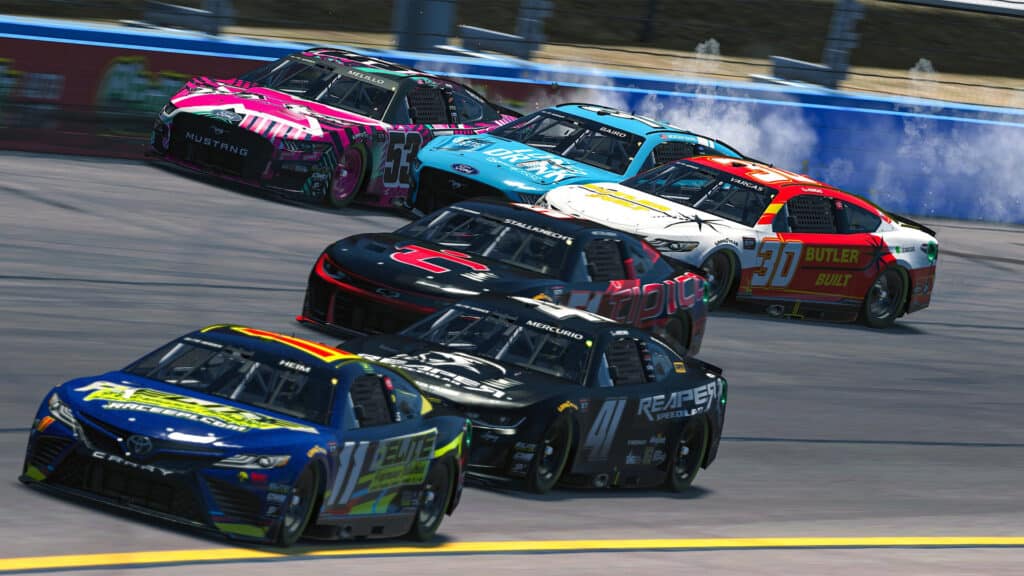
What are some lesser-known items in the Code?
It’s all pretty straightforward, to be honest. Most of the rules and regulations are common sense, so you’ll know what to expect. The lesser-known things are usually those gray areas that people might think they’re being smart with. Earlier in 2021, it became a social media outrage when cheesing came into the public eye.
What the hell is cheesing? To me, it’s an exploit of the game’s coding in which drivers realized they could get faster by doing ridiculous acts. It’s not a true definition and it’s not specifically mentioned in the code either. Others will define it in their own specific way as well.
That’s a dumb thing to call it…
I don’t know why it stuck, but now it’s more of a meme than anything. Honestly though, it’s somewhat more than that as well. One of my favorite cheese flavors is the monster truck or completely askew sets that look ridiculous. Setups can be adjusted to unrealistic proportions to exploit ranges not meant to be exploited. It leads to some weird looking chassis on race cars.
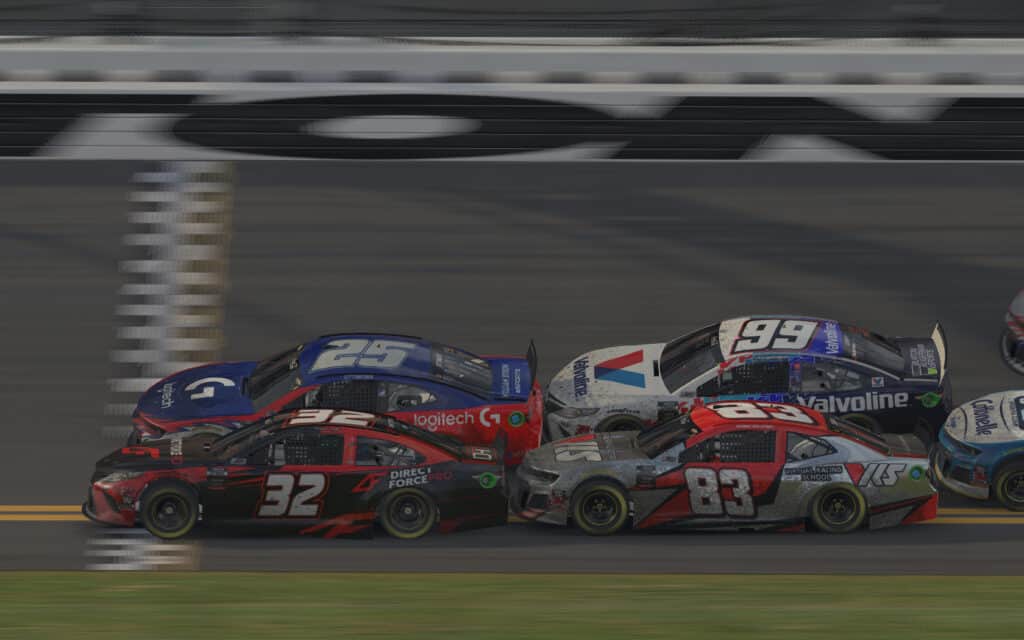
The main issue for this, however, came from the qualifying brand of cheese and led to the reemergence of Sections 8.1.1.8. and 8.1.1.9. on pages 27 and 28, something that had been in the rule book for a while, but was often forgotten or looked over.
The rules have always had strict wording, at least since the World Championships began. In the 2011 Sporting Code, it read in Section 13.2.4.1. that drivers must use the racing surface for World Championship level qualifying. In a later 2013 Sporting Code, the code prohibited drivers from heating up tires, detailed in Section 7.1.1.7. while the prior racing surface rule was updated to be found in Section 13.3.4.1.
The current day wording lists the racing surface guidelines, but also lists a broadened “nefarious tactics” line which would encompass a multitude of different ways to gain an advantage. From backing up in the pits to holding down the brakes to weaving at a low speed to utilizing unused pit roads, the nefarious tactics line made it so that if iRacing saw something they didn’t like, they could act upon it.
Of course, now we have qualifying scrutiny options. While there are still ways to get around that system, even on strict settings, at least Section 8.1.1.9. should keep drivers more honest.
What kind of changes happened in the last update?
Besides a few improper line spaces getting fixed, the August Sporting Code update did provide a few important changes and definitions from the previous release in April.
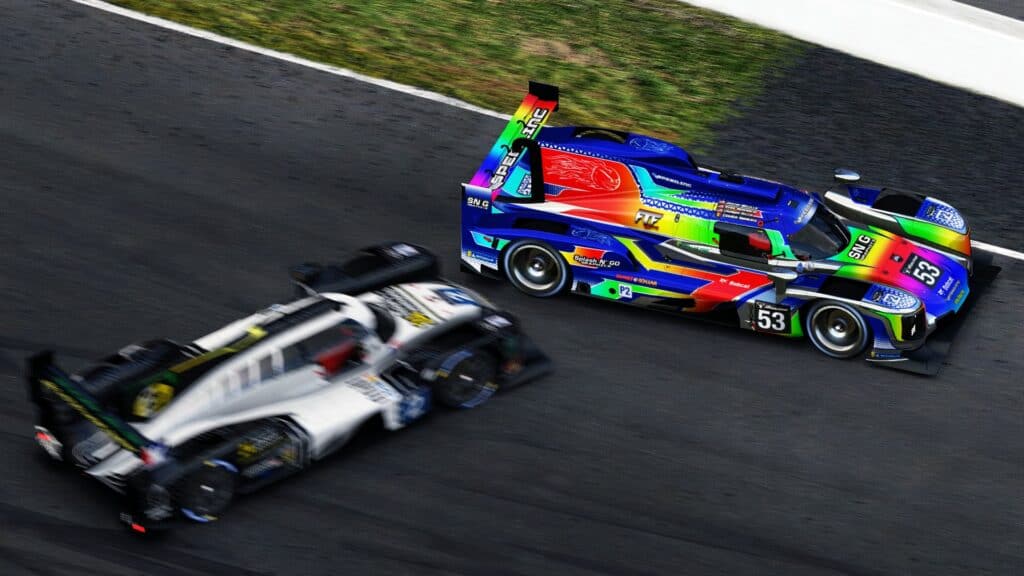
Probably the biggest addition to the code was the word Tanking. That now explicitly prohibits drivers from intentionally lowering their safety rating, iRating, or license class. A mention of it now exists on page 23 in section 6.10.3 and a definition has been added to the glossary on page 41.
Did you know that official ranked practice sessions now affect your safety rating? In the previous code, Section 4.3.1.1 table on page 12 stated that it didn’t, but now it’s been changed. Section 6.8.2.4 on page 21 also has been updated to state that the leader can, in fact, start the race as soon as the pace car leaves the racing surface.
Other definitions added to the glossary include Divisions on page 37, explaining how participating drivers are equally grouped in a series of divisions 1 through 10 while Rookies are classified in an 11th division. Speedtree is another definition added on page 41, explaining what the new rendering system in use is since the Mt. Washington Auto Road was added to the service.
What changed from the beginning of iRacing to now?
Back in the day, FIRST was the name of the sanctioning body for iRacing.com Motorsport Simulations. The Sporting Code would be written and distributed by FIRST. The FIRST Sporting Code enforced the letter of the law in iRacing land.
Today, it’s just iRacing.com that holds that position. The words read the same, except that every mention of FIRST is replaced by iRacing.com. It’s the iRacing Sporting Code, but the ideals are very much still aligned.
A fun tidbit from a 2008 version of the Sporting Code reveals that “contact with another object” like a wall or a catch fence would result in a 3x incident point value. There are no 3x incidents in today’s rules as the 3x incident was scrapped before the May 2009 update. That occurrence now only results in a 2x incident.

More classifications of licenses, such as the dirt oval and dirt road have been added in with their specific set of rules over the years. Multi-class racing also has its own rules to go by and wasn’t in the initial release.
The first Sporting Code I could find from 2008 was 47 pages in length. Compared to the current 42-pager, the font size and spacing have gotten much more efficient over time. It’s really a 35-page Sporting Code with a seven-page glossary. There were only 10 subsections in the first sporting code, but that’s now at 15.
Areas such as Conduct and Flag Signals have been fleshed out. Areas such as Hosted Sessions, Sanctioned Race Series and the World Championship / Esports sections have been added. Clubs were fairly big at the start, but are barely mentioned in the latest editions.
WHY SHOULD WE CARE ABOUT THE SPORTING CODE?
Listen, in the last week or so, I’ve combed these books with a fine-toothed comb. I’ve learned some new things too in the process. Ultimately, as long as you race proper and don’t do anything that wouldn’t be done if you were in a real race car or in a real situation, then you’ll likely be able to keep Nim Cross off your tail for your entire iRacing career.
Like I said at the top, the Sporting Code protects everyone. While every racing game out there with an online or esports presence has its own terms and conditions, they’re likely fairly similar in the fact that these game makers and event throwers just want things to be fair for everyone, therefore fun to play.
Nothing is perfect, and the Sporting Code will likely never be 100 percent what it needs to be. When enforced, it does the job right to keep you and your competitors in a proper virtual racing space.
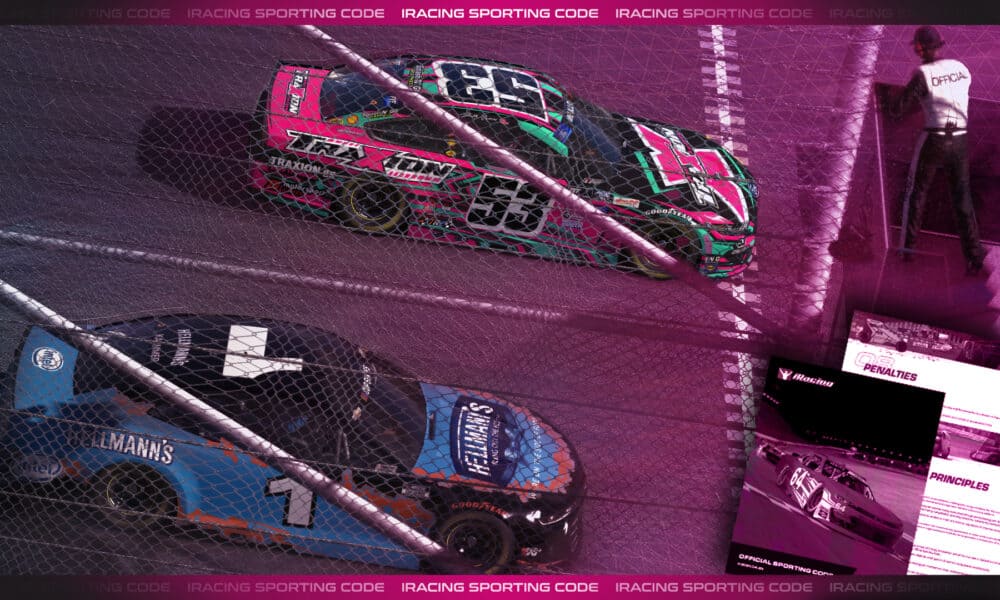




Chat with the Community
Sign Up To CommentIt's completely Free